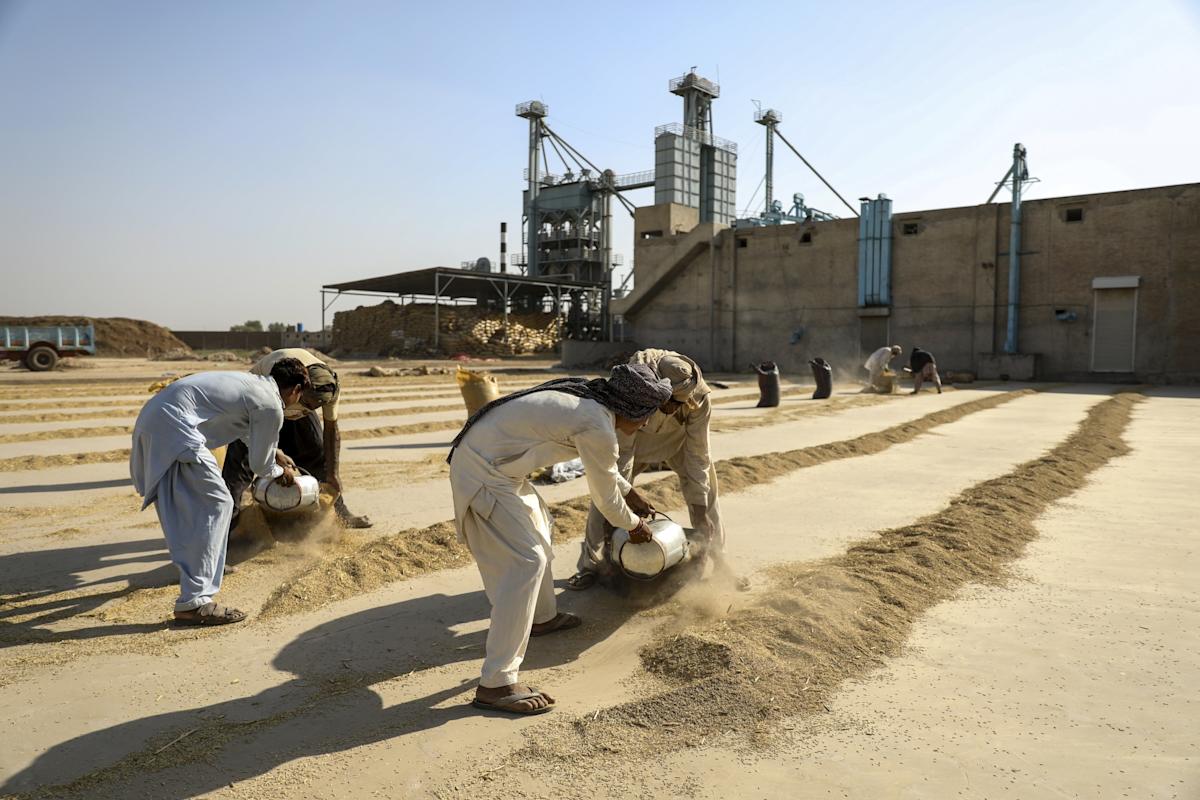Pakistan’s Punjab Sees Rice Loss as Floods Damage Crops
Workers fill sacks of rice after drying at a rice-processing factory in Punjab, Pakistan.
(Bloomberg) —
Most Read from Bloomberg
Recent heavy rains and floods have damaged about one-fifth of the rice crop in Pakistan’s Punjab province, which accounts for majority of the production in the world’s fourth-biggest exporter of the staple.
Rice yields in the region, which saw the worst flooding in more than three decades, are likely to drop by more than 9% this year, according to a report by Pakistan’s government and the Rice Exporters Association of Pakistan seen by Bloomberg. The report was confirmed by Faisal Jahangir Malik, Chairman of the rice association.
More than one million acres (404,685 hectares) of rice crops were impacted by floodwaters, while rains destroyed over 370,000 acres, said the report. That equates to about 15% of the country’s total rice growing area.
The likely drop in Pakistan’s output could support global rice prices, which have fallen more than 40% from a 15-year high in January 2024, and could offer some relief to rival exporters in India, Vietnam, and Thailand.
Pakistan’s national food security and research minister, Rana Tanveer Hussain, did not respond to a request for a comment.
The Punjab province accounts for 68% of Pakistan’s total annual food grain production, and this year’s precipitation in the region has been particularly severe. The country is grappling with the impacts of months of extreme rainfall that have killed more than 1,000 people and displaced around 4 million.
About 543,000 acres of rice area were flooded earlier in the area, according to a joint report from agencies including Microsoft’s AI for Good Lab and NASA Harvest, which cited satellite-based analysis. The rice acreage in Punjab is estimated at about 6.47 million acres.
(Updates with details in third paragraph)
Most Read from Bloomberg Businessweek
©2025 Bloomberg L.P.



Leave a Comment
Your email address will not be published. Required fields are marked *